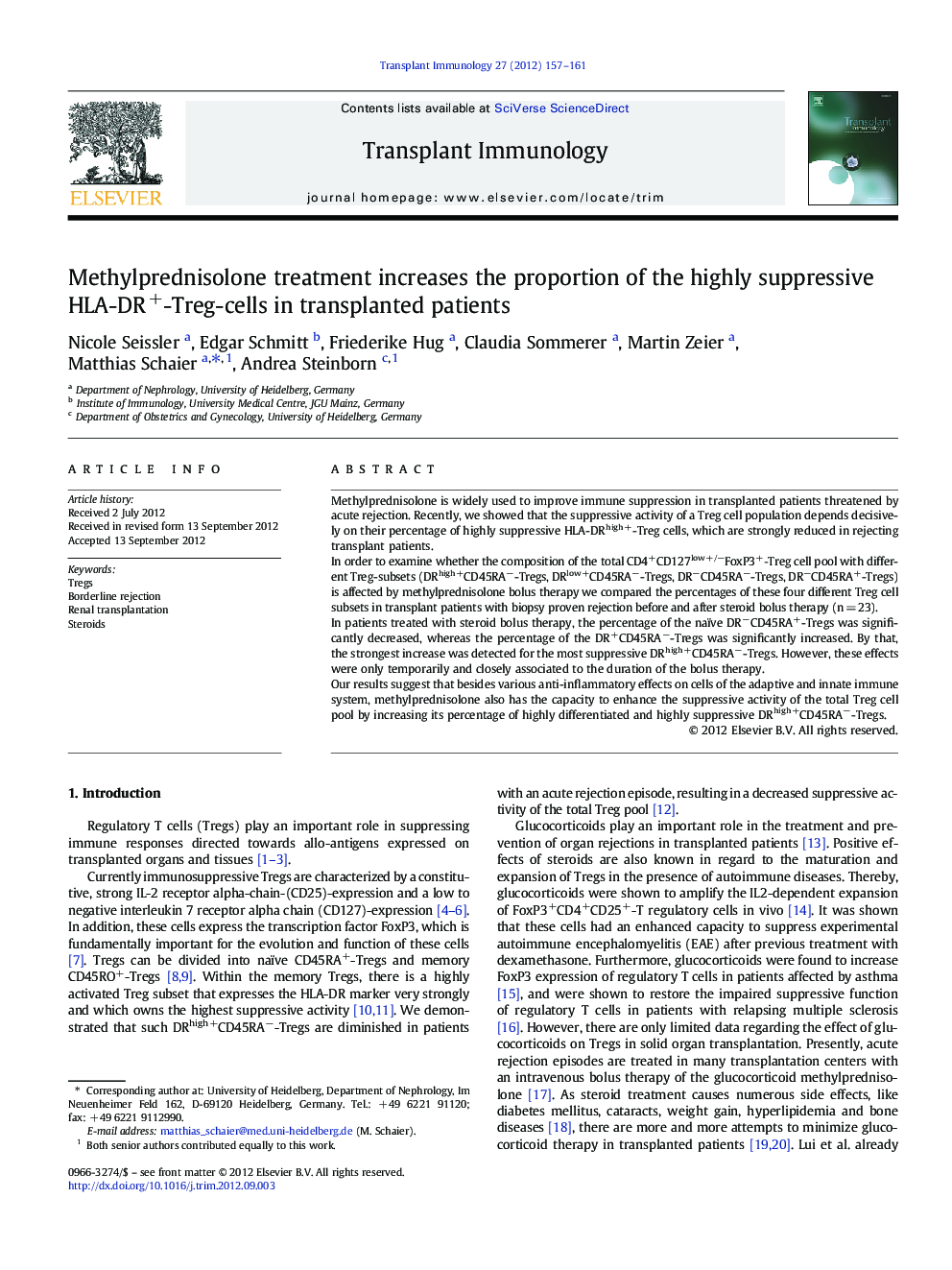| Article ID | Journal | Published Year | Pages | File Type |
|---|---|---|---|---|
| 3392093 | Transplant Immunology | 2012 | 5 Pages |
Methylprednisolone is widely used to improve immune suppression in transplanted patients threatened by acute rejection. Recently, we showed that the suppressive activity of a Treg cell population depends decisively on their percentage of highly suppressive HLA-DRhigh +-Treg cells, which are strongly reduced in rejecting transplant patients.In order to examine whether the composition of the total CD4+CD127low +/−FoxP3+‐Treg cell pool with different Treg-subsets (DRhigh +CD45RA−-Tregs, DRlow +CD45RA−-Tregs, DR−CD45RA−-Tregs, DR−CD45RA+-Tregs) is affected by methylprednisolone bolus therapy we compared the percentages of these four different Treg cell subsets in transplant patients with biopsy proven rejection before and after steroid bolus therapy (n = 23).In patients treated with steroid bolus therapy, the percentage of the naïve DR−CD45RA+-Tregs was significantly decreased, whereas the percentage of the DR+CD45RA−-Tregs was significantly increased. By that, the strongest increase was detected for the most suppressive DRhigh +CD45RA−-Tregs. However, these effects were only temporarily and closely associated to the duration of the bolus therapy.Our results suggest that besides various anti-inflammatory effects on cells of the adaptive and innate immune system, methylprednisolone also has the capacity to enhance the suppressive activity of the total Treg cell pool by increasing its percentage of highly differentiated and highly suppressive DRhigh +CD45RA−-Tregs.
► Steroids have a positive effect on the differentiation and maturation of Treg cells. ► Steroids have the capacity to enhance the suppressive activity of Tregs. ► Steroids increase the conversion of naïve into highly suppressive DRhigh +-Tregs.
